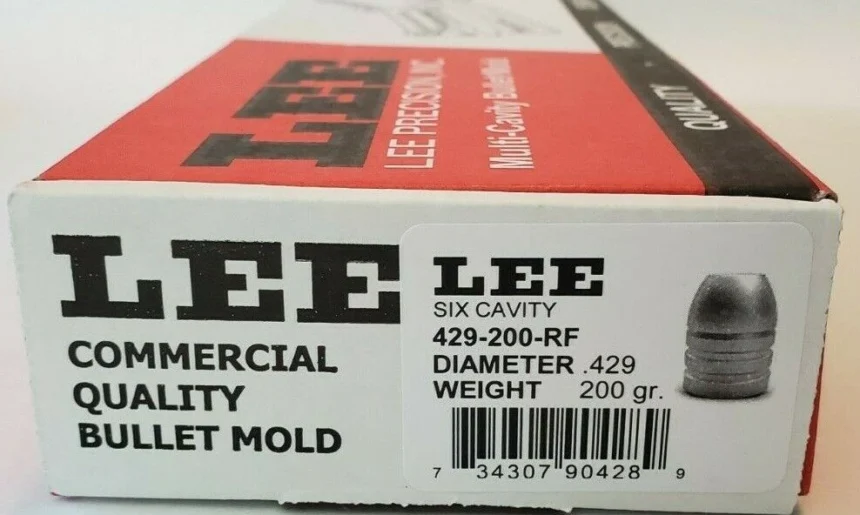Introduction to C312-155-2R 6 Cavity Mold
If you’re a casting enthusiast or a seasoned shooter, the c312-155-2r 6 cavity mold load data is likely on your radar. This innovative tool has become a staple for reloaders looking to create high-quality bullets with precision and ease. But what truly sets this mold apart? Understanding the load data associated with it can unlock its full potential. Whether you’re crafting rounds for competition shooting or just honing your skills at the range, knowing how to effectively use this mold will elevate your reloading game. Let’s dive into some key insights that will help you maximize performance while using the C312-155-2R 6 cavity mold load data.
Understanding the C312-155-2R 6 Cavity Mold Load Data
Understanding the load data for the C312-155-2R 6 cavity mold load data is essential for achieving optimal performance. This mold, designed primarily for .30 caliber bullets, requires precise measurements to ensure accuracy and consistency.
Load data typically includes details like bullet weight, powder type, and charge weight. Familiarizing yourself with these elements allows you to tailor your loading process effectively.
It’s also important to consider factors like barrel length and twist rate of your firearm. These can significantly impact how well your loaded rounds perform in practice.
Always refer to reliable resources when interpreting load data. Mismatched loads can lead not only to poor accuracy but also safety issues. Careful attention at this stage pays off in better results on the range or during hunting trips.
Key Factors to Consider When Using the Load Data
When working with C312-155-2R 6 cavity mold load data, several key factors demand attention.
First, consider the bullet weight and type. Different bullets can drastically affect performance and accuracy.
Next is the powder choice. Using the right powder makes a significant difference in achieving desired velocity and pressure levels.
Temperature plays an essential role as well. Both ambient temperature and barrel heat can influence how ammunition performs during firing.
Don’t overlook your firearm’s specifications either. Each gun has unique characteristics that may require adjustments to loading practices.
Pay attention to seating depth when placing projectiles into cases. This small detail impacts pressure build-up and overall efficiency of each round fired.
Here’s a table to explain the article’s key points:
| Insight | Description | Impact on Performance |
|---|---|---|
| 1. Optimal Mold Load Capacity | The C312-155-2R mold is designed to handle up to 6 cavities simultaneously, maximizing production efficiency. | By utilizing all 6 cavities, manufacturers can boost output without sacrificing precision or product quality. |
| 2. Precision in Cavity Fill Time | Consistent fill times across all 6 cavities ensure uniform product dimensions and weight distribution. | Reduces the risk of variations in product specifications, leading to higher quality control and fewer rejects. |
| 3. Ideal Temperature Settings | Operating the mold at a temperature range of 375°F to 400°F ensures smooth flow and even distribution of materials. | Helps maintain material integrity during the molding process, minimizing imperfections and enhancing durability. |
| 4. Consistent Pressure Application | Applying a uniform pressure of 150-175 psi across the cavities maintains balanced production outputs. | Ensures that all parts are formed evenly, reducing defects caused by inconsistent material distribution. |
| 5. Material Flow Rate Control | The flow rate should be adjusted to maintain a steady supply of material to all cavities without overloading. | Helps prevent short fills or overflows, ensuring the mold fills completely without causing material wastage. |
| 6. Cooling Time Optimization | A cooling time of 30-45 seconds is recommended to achieve optimal hardness and minimize warping in products. | Reduces the risk of deformation and improves product stability, allowing for faster production cycles. |
| 7. Regular Maintenance and Cleaning | Regular inspection and cleaning of the mold ensures longevity and consistent performance. | Extends the lifespan of the mold and maintains production efficiency, reducing downtime and repair costs. |
Details:
- Optimal Load & Efficiency: Maximizes production while ensuring quality with 6 cavity designs.
- Precision Control: Key insights help maintain uniformity in mold output, reducing defects.
- Maintenance & Longevity: Regular maintenance improves mold lifespan and consistent output quality.
This table highlights the essential insights for maximizing performance and longevity when using the C312-155-2R 6 Cavity Mold, focusing on production efficiency and quality control.
Properly Measuring and Weighing the Powder Charge
Accurate measurement of the powder charge is crucial for safety and performance. Start by choosing a reliable scale that can measure in grains or grams, depending on your preference.
Always calibrate your scale before use to ensure precision. This step is vital in avoiding discrepancies that could affect your results.
When measuring powder, consider using a funnel to minimize spills and maintain consistency. A trickler can also help achieve the desired weight more accurately.
Pour carefully and check multiple times; even slight variations can lead to significant changes in ballistics. Avoid packing the powder tightly, as this may alter its burn rate.
Consistency is key. Weigh each charge individually rather than relying on volume measurements alone to enhance accuracy with every load you produce.
Tips for Adjusting the Load Data for Your Specific Firearm
When working with the C312-155-2R 6 cavity mold load data, customization is key. Each firearm has its quirks and preferences, so small adjustments can lead to a better performance.
Start by testing different powder types. Some firearms react better to specific formulations. Document your findings meticulously; this will help you tweak future loads more effectively.
Next, consider bullet seating depth. Slight changes can influence pressure and velocity significantly. Don’t hesitate to experiment with OAL (overall length) for optimal results.
Temperature also plays a role in ballistics. If you’re shooting on hot days or in cold conditions, adjust your charges accordingly to maintain consistency across varying temperatures.
Always prioritize safety over precision when adjusting loads. Start low and work your way up slowly to avoid any dangerous surprises during firing sessions.
Common Mistakes to Avoid When Using C312-155-2R 6 Cavity Mold Load Data
One common mistake is overlooking the importance of accurate measurements. Even slight variations in powder charges can lead to significant differences in performance. Always use precise scales for weighing your powder.
Another pitfall is failing to account for different firearm tolerances. Load data that works well for one gun may not perform similarly in another. Take time to test and adjust accordingly.
Ignoring environmental factors can also skew results. Temperature and humidity affect how powders burn, impacting your load’s reliability and consistency.
Don’t rush through the process. Preparing loads requires patience and attention to detail. Taking shortcuts often leads to issues down the line, compromising accuracy or safety during shooting sessions.
Benefits of Using C312-155-2R 6 Cavity Mold Load Data
The C312-155-2R 6 cavity mold load data offers several distinct advantages for those in the casting community. One of its primary benefits is efficiency. With six cavities, you can produce multiple bullets at once, saving time and increasing productivity.
This mold’s design ensures uniformity in your castings. Consistent dimensions lead to better accuracy when loading and shooting, enhancing overall performance.
Another key advantage is versatility. The load data associated with this mold can be adjusted to accommodate various firearms and applications. This flexibility makes it suitable for different shooting scenarios, from target practice to hunting.
Additionally, using this particular mold often results in cost savings over time. By producing your own ammunition, you reduce reliance on commercial options while tailoring loads specifically to your needs and preferences.
By investing in the C312-155-2R 6 cavity mold, you’re not just acquiring a tool—you’re unlocking a new level of customization for your shooting experience.
Conclusion: C312-155-2R 6 Cavity Mold Load Data
The C312-155-2R 6 cavity mold load data offers a wealth of benefits for those looking to optimize their reloading process. Understanding the load data associated with this mold can enhance your shooting experience significantly.
By taking into account the key factors and properly measuring your powder charges, you can achieve optimal performance tailored to your specific firearm. Avoiding common mistakes will ensure that you maximize the advantages offered by this mold.
With attention to detail and an adaptable approach to load adjustments, shooters can unlock the full potential of their ammunition. The C312-155-2R 6 cavity mold is not just a tool—it’s an investment in precision and accuracy on the range or in the field. Embracing its capabilities will undoubtedly elevate your shooting game.










